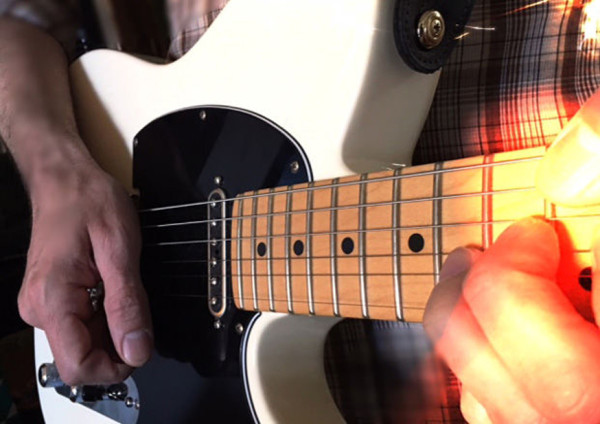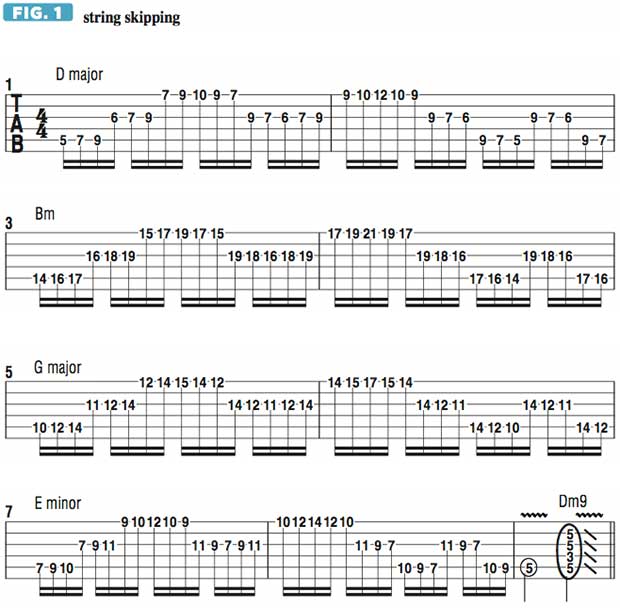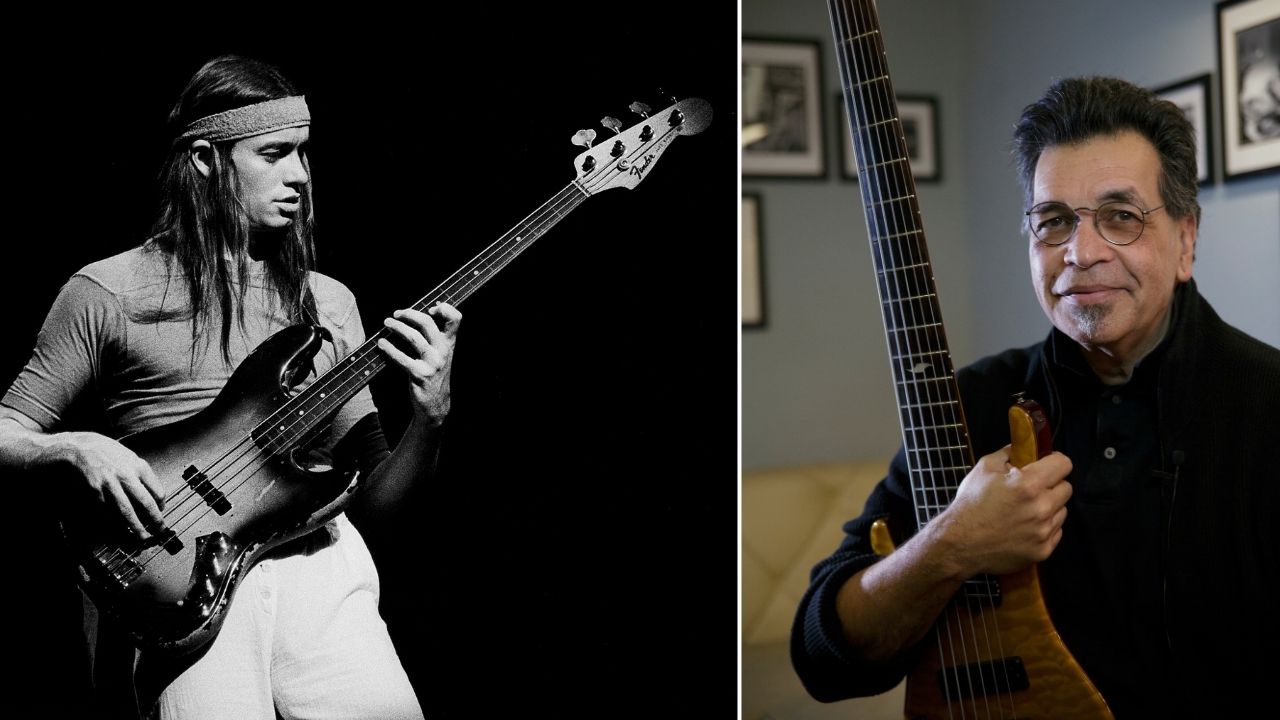Using String Skipping to Create Angular, Sweep-Type Sounds
These string-skipping techniques will help you nail some fast alternate- and sweep/economy-picked phrases.

String skipping is a technique I use in a handful of solos that I’ve recorded with my band, Falling in Reverse. Some of my guitar students have erroneously assumed that certain phrases were performed using sweep picking, but in fact I used string skipping, along with alternate and economy picking, to create a similar effect.
If you’re a fan of the sound of fast alternate- and sweep/economy-picked phrases, the string-skipping techniques I demonstrate in this month’s lesson will appeal to you. One great advantage to string skipping is that it allows you to get the aggressive sound of steady alternate picking, as all the notes are picked.
Another benefit is that it lets you perform the big intervallic “jumps” often associated with sweeps by moving very quickly from, say, the fifth to the third to the first string and then back down again, leaping from one octave to another instantly. This results in exciting phrases that sound more difficult to play than they actually are.
I don’t think that much about “upper extensions,” such as the ninth, 11th or 13th. I prefer to keep the primary triads of each chord in mind in order to maintain a clear picture of the harmonic relationship between the single-note line and the chord over which it is played. FIGURE 1 is an eight-bar exercise built from string-skipped, 16th-note phrases that move between a series of tonal centers in two-bar segments. I begin with two bars over D major and play notes exclusively from the D major scale (D E F# G A B C#).
The approach can be boiled down to a three-notes-per-string concept that begins in fifth position and then quickly shifts up to seventh and ninth positions. At bar 3, I switch to lines based on the relative minor chord, Bm, with lines based on the B Aeolian mode, also known as the B natural minor scale (B C# D E F# G A).
This phrase is played identically to the first D major-based phrase in terms of the way it “falls” on the fretboard, although it begins in 14th position and moves up to 15th and 17th positions. The remainder of the exercise is constructed by applying this same string-skipping and intervallic-sequencing approach to G major- and E minor-based lines. The G major lines are based on the G major scale (G A B C D E F#), and the E minor lines are based on the E Dorian mode (E F# G A B C# D). The example ends with a vibrato-ed Dm9 chord.
I strive to use minimal pick-hand movement when playing these kinds of phrases, keeping the pick close to and directly above each given string at all times. I also use a sharp attack in order to make each note jump out and “speak” as clearly as possible, which is a good thing to keep in mind while playing through this exercise.
All the latest guitar news, interviews, lessons, reviews, deals and more, direct to your inbox!

